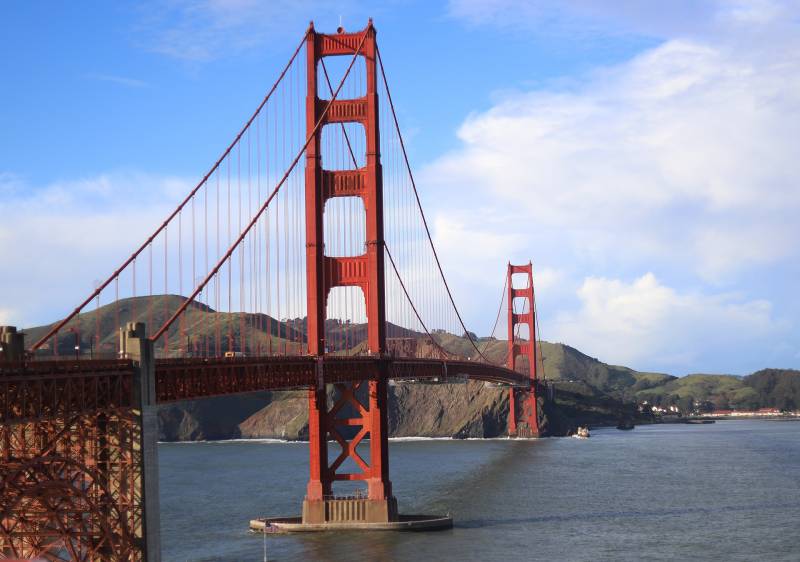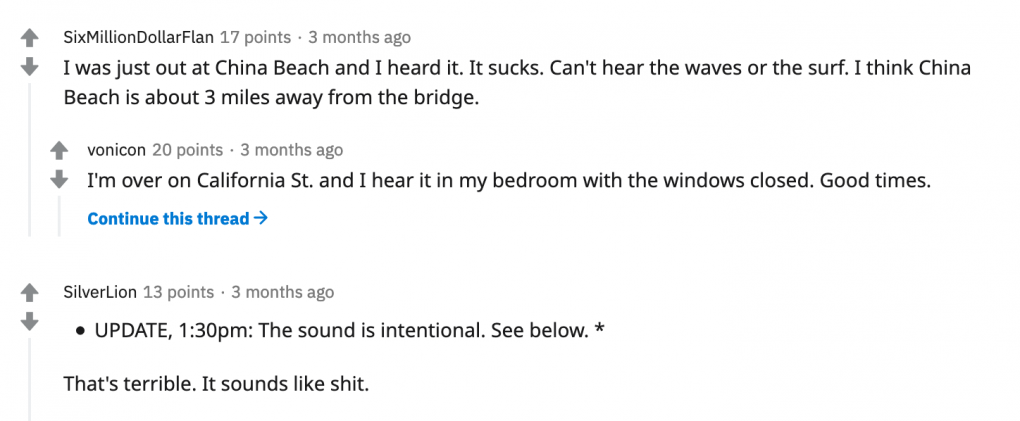If you’ve driven across the Golden Gate Bridge in the last couple of months, you may have heard a startlingly loud humming noise coming from the bridge itself. Bay Curious listener Ryan heard it one day while driving his motorcycle across the bridge.
“Once COVID started it was just fun to go on 20-minute rides,” Ryan said. “It was a pretty easy way to get out of the house and not talk to people.”
Ryan normally avoids crossing the bridge on windy days, but had no choice one day after missing his exit. That’s when he heard it.
“It made this really really loud noise, it sounded like, I don’t know, like a howl or a whistle or something like that,” he said. “It kinda sounded like when you blow into a beer bottle.”
Ryan is not the only person wondering what’s going on with the bridge. Residents report hearing it across the bay, at Lands End, and from other points miles away.
As much as I would‘ve loved this eerie sound to be aliens coming for us, apparently it’s the installation of new wind resistance railing that has turned the Golden Gate Bridge into a huge instrument that can be heard all around the Bay! Hypnotizing! #goldengatebridge #SanFrancisco pic.twitter.com/DhWEnttp2X
— Shirin (@Shirin_Jnk) June 6, 2020
KQED’s senior editor for Arts, Gabe Meline, looked into the strange phenomenon back in June. The sound is coming from new sidewalk railing slats installed as part of a wind retrofit meant to make the bridge safer and more resilient.
But Bay Curious’ sound engineer, Rob Speight, wanted to know a lot more. He dug into the issue further, wondering why bridge engineers decided to change the slats in the first place.

